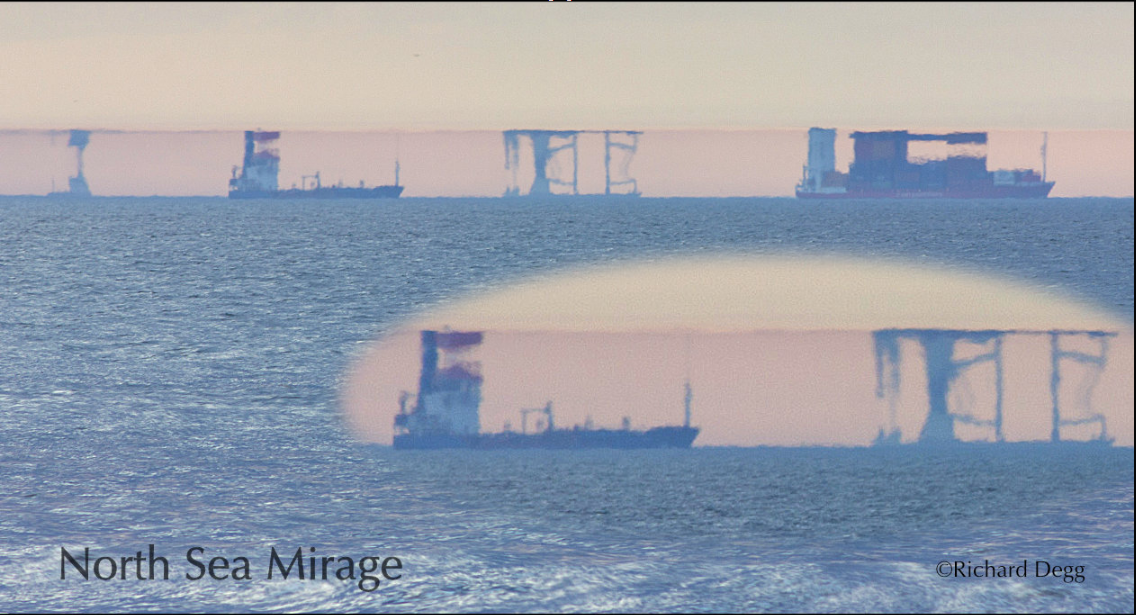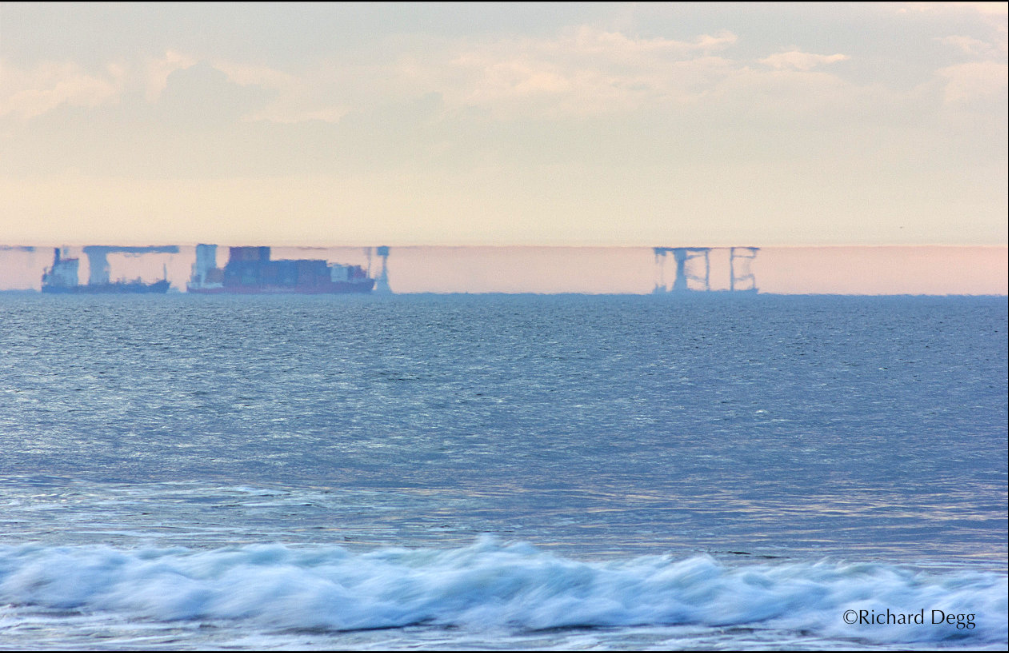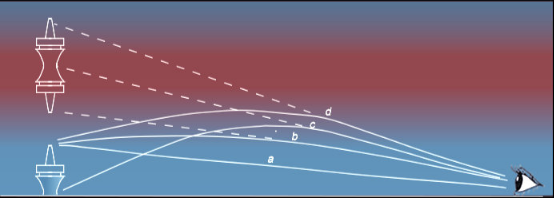Superior Mirage, North Sea
Superior Mirage: Exploring the Phenomenon in the North Sea
Superior mirages are fascinating atmospheric optical illusions that occur when light rays passing through air temperature gradients get refracted. These mirages can create stunning visual effects, distorting the appearance of objects and creating illusions of floating or inverted images. One notable example of a superior mirage took place in the North Sea, captivating the attention of many observers.
In a normal atmosphere, the lower air is warmed by the land and gets cooler with height. However, the situation leading to the superior mirage in the North Sea was quite the opposite. In this case, cooler air resided beneath warmer air, creating a unique set of conditions for the mirage to occur.
When light rays encounter air temperature gradients, they undergo refraction, bending towards the denser and colder air. In the case of the superior mirage observed in the North Sea, this bending of light created intriguing visual effects.
To understand the phenomenon, let's examine a classical superior mirage. Imagine a ship sailing across the sea. A light ray 'a' from the ship's funnel passes through a region of cold air and remains undeviated. However, ray 'b' from the same point crosses a temperature gradient and bends downwards towards the colder air and the observer's eye. As a result, it appears to originate from a higher point than its actual source. Similarly, ray 'c' from the hull of the ship is refracted even more strongly by the temperature gradient, causing it to appear to come from an even higher point. This creates an inverted image of the ship.
In addition to the inverted image, more strongly refracted rays form an erect image of the ship above the inverted one. With the right temperature profile, it is even possible to have another inverted image above the erect one. The sequence of images can be explained by applying principles of topology.
The superior mirage observed in the North Sea demonstrated the captivating nature of this optical phenomenon. The inversion and distortion of the ship's image created a mesmerizing visual spectacle for those fortunate enough to witness it.
While the specific conditions necessary for a superior mirage to occur can vary, temperature gradients play a crucial role. The temperature profile of the atmosphere determines the degree of refraction and the resulting optical effects. In the case of the North Sea mirage, the presence of cooler air beneath warmer air provided an ideal environment for the mirage to manifest.
Superior mirages are not limited to ships at sea; they can occur with various objects and in different locations. For example, mirages can create illusions of floating cities, towering mountains, or even multiple images of the same object. These captivating phenomena have been observed across the globe, from arctic regions to deserts.
In conclusion, the superior mirage observed in the North Sea serves as a remarkable example of the captivating and visually stunning nature of atmospheric optics. The interplay between temperature gradients and light refraction creates illusions that challenge our perception of reality. As we continue to explore and understand atmospheric phenomena, we unlock new insights into the complex workings of our natural world.



A normal atmosphere has the lower air warmed by warm land and gets cooler with height. The situation producing Richard Degg's mirage was the reverse, cooler air beneath warmer.
Light rays passing across air temperature (and therefore density) gradients get refracted. They
always bend towards the denser and colder air.

At left we have a classical superior mirage. Ray 'a' from the ship's funnel passes always through cold air and is undeviated. But ray 'b' from the same point crosses a temperature gradient and bends downwards to the colder air and the eye. It appears to come from a point higher up. Ray 'c" from the hull is refracted even more strongly by the temperature gradient. It appears to come from higher up still. The result - an inverted image of the ship. More strongly refracted rays form an erect ship above the inverted one. With the right temperature profile there would be another inverted image above that. Application of topology neatly explains the image sequence.
Note: this article has been automatically converted from the old site and may not appear as intended. You can find the original article here.
Reference Atmospheric Optics
If you use any of the definitions, information, or data presented on Atmospheric Optics, please copy the link or reference below to properly credit us as the reference source. Thank you!
-
<a href="https://atoptics.co.uk/blog/superior-mirage-north-sea/">Superior Mirage, North Sea</a>
-
"Superior Mirage, North Sea". Atmospheric Optics. Accessed on April 20, 2024. https://atoptics.co.uk/blog/superior-mirage-north-sea/.
-
"Superior Mirage, North Sea". Atmospheric Optics, https://atoptics.co.uk/blog/superior-mirage-north-sea/. Accessed 20 April, 2024
-
Superior Mirage, North Sea. Atmospheric Optics. Retrieved from https://atoptics.co.uk/blog/superior-mirage-north-sea/.